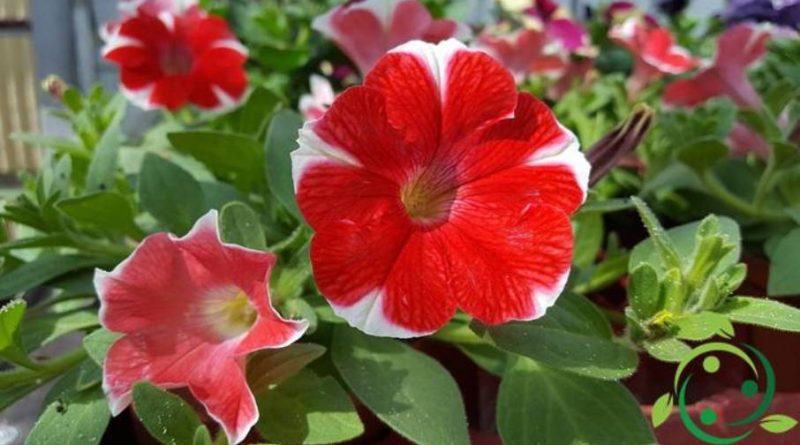How to grow Petunias
How to grow Petunias
Petunias are a genus of plants that belongs to the Solanaceae family. The genus Petunia (Petunia Juss., 1803) is native to South America and includes annual or perennial species, up to 1 meter high, with many hybrids and cultivars, also dwarf-shaped, with double or simple funnel-shaped flowers.
They develop large bushes, densely branched, 25-60 cm tall, often presenting prostrate or hanging stems; the leaves, light green in color, are covered with a very thin hair, to the touch they are slightly sticky, and give off a characteristic fragrance.
The petunias are characteristic because they give generous and prolonged blooms ranging from spring to the first frosts, in a vast range of colors from pure white, to pink, to red, to more or less dark purple and to brick-red, with rippled corollas and curled.
In this card we will see how to grow Petunias following the most useful agronomic tricks.
Among the most known species are P. axillaris and P. violacea, from which many hybrids and cultivars with various habitations (dwarf, compact, decombant, etc.) are derived.
In Italy, and in many other European countries, the best known hybrid is Petunia Surfinia, a hanging variety propagated by means of cuttings (the plant is sterile, ie it produces seeds that cannot be used). In the United States, on the other hand, several widespread hybrids propagated by seed are more widespread, the best known of which is the Petunia Wave.
Petunias can be grown in the garden or in pots on terraces, on balconies, etc.
They settle down in the ground, or in hanging vases or bowls; they prefer very bright locations, possibly sunny for at least six hours a day; placement in a shady place can cause poor flowering. The thin stems make the plants quite fragile, so it is advisable to avoid placing them in places very exposed to the wind. They love places with a warm temperate climate while they fear the cold.
For optimal development the Petunias need a soil rich in organic, fresh and deep substance; it is advisable to use a good universal soil, mixed with finely chopped bark and little sand, to increase drainage.
If cultivated in pots, at the time of repotting mix a small amount of mature organic fertilizer or humus; later, from May to September, fertilizer is supplied for flowering plants, every 15-20 days, mixed with the water used for watering.
If grown in the garden then mature manure or earthworm humus or other well-humified organic substance should be added at the beginning of the spring, or annually.
The sowing of petunias occurs in February in a warm bed. The new plants are kept in a closed and humid environment until they reach at least 10 cm. They are then placed on organic soil, removing the flowers and withered leaves.
As for water needs, petunias are quite demanding, they can withstand a few hours of drought, but plants tend to wither quickly in the event of a prolonged water shortage; for this reason we must water regularly, every 2-3 days, intensifying the watering during the summer months. In any case we must avoid water stagnations waiting for the ground to be dry between one watering and another.
Finally we see diseases and possible adversities. In general, the Petunias especially fear the red spider, the leaves take on gray – sometimes rusty yellowish color; they are also attacked by aphids.
To avoid these infestations, the Petunias cultivation environment must always be kept moist, avoiding stagnation, and not using nitric nitrogen fertilizers.

